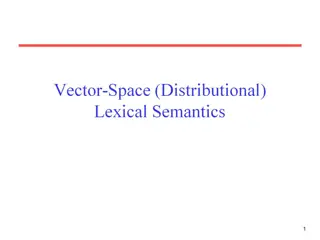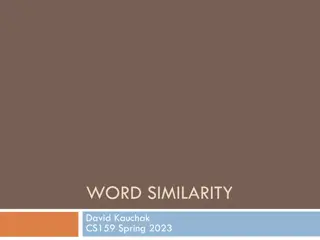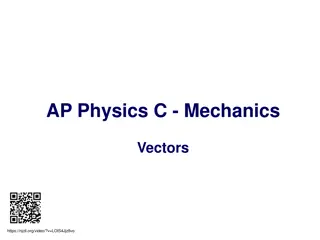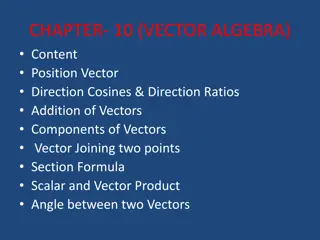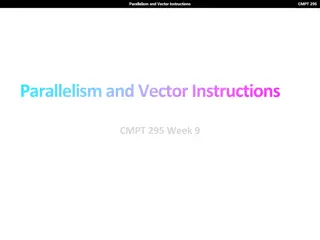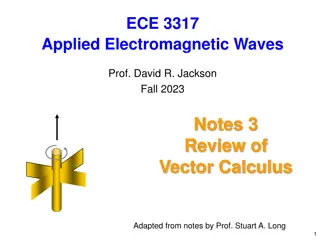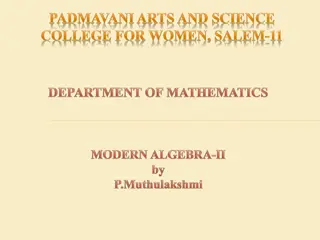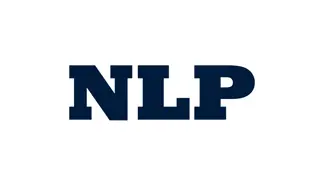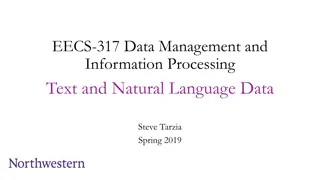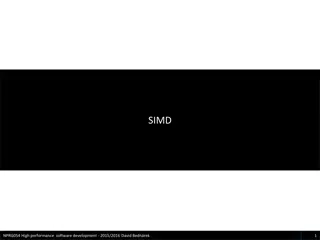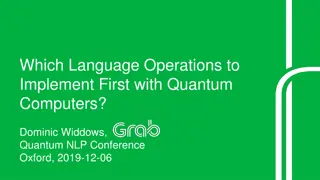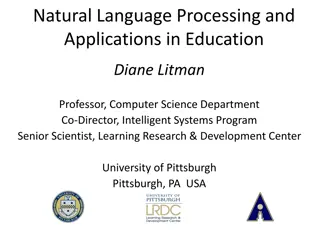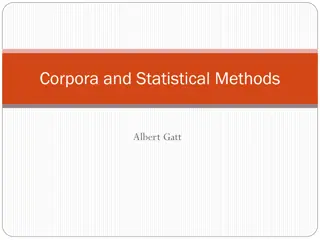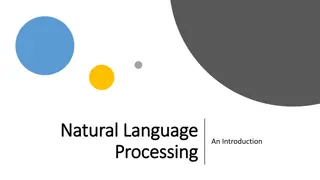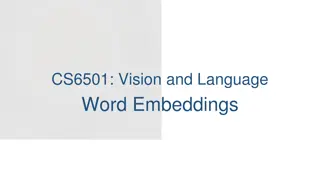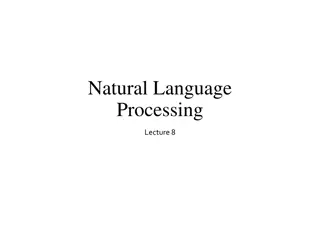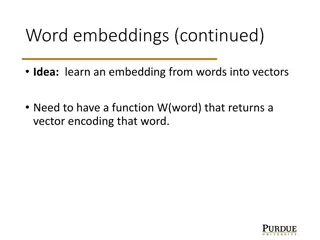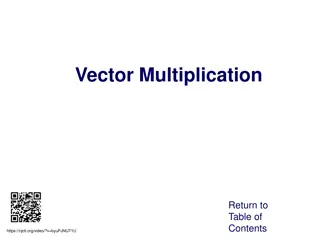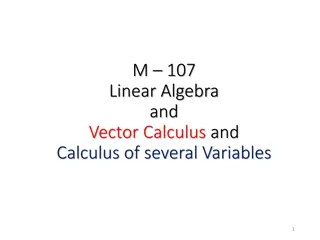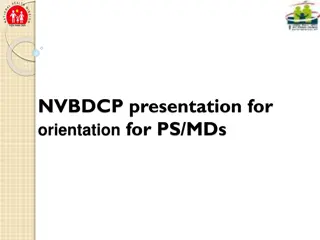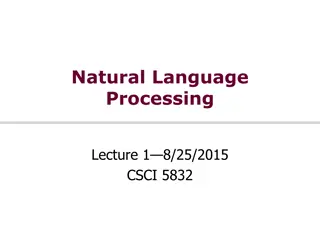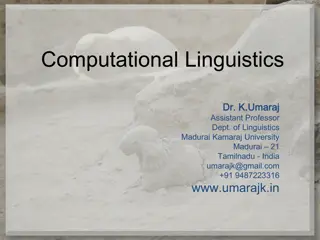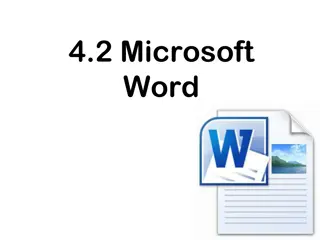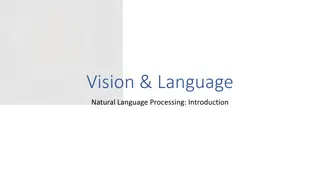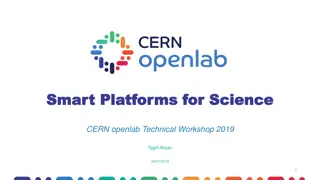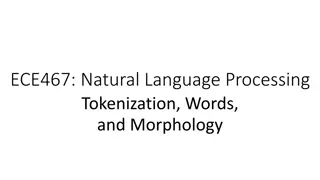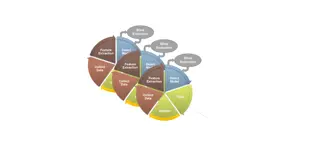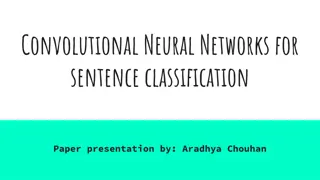Understanding Word Vector Models for Natural Language Processing
Word vector models play a crucial role in representing words as vectors in NLP tasks. Subrata Chattopadhyay's Word Vector Model introduces concepts like word representation, one-hot encoding, limitations, and Word2Vec models. It explains the shift from one-hot encoding to distributed representations for more effective word embeddings. Word vectors are compared, illustrating how similar words have similar embeddings, enhancing NLP tasks' performance.
Download Presentation

Please find below an Image/Link to download the presentation.
The content on the website is provided AS IS for your information and personal use only. It may not be sold, licensed, or shared on other websites without obtaining consent from the author. Download presentation by click this link. If you encounter any issues during the download, it is possible that the publisher has removed the file from their server.
E N D
Presentation Transcript
Word Vector Model By Subrata Chattopadhay
Word Representation In general, words are treated as atomic symbols.
Word Vectors At one level, it is simply a vector of weights. In a simple 1-of-N (or one-hot ) encoding every element in the vector is associated with a word in the vocabulary. The encoding of a given word is simply the vector in which the corresponding element is set to one, and all other elements are zero. One-hot representation:
Word Vectors: One-Hot Encoding Suppose our vocabulary has only five words: King, Queen, Man, Woman and Child. We could encode the word Queen as:
Limitations of One-hot encoding Word vectors are not comparable Using such an encoding, there is no meaningful comparison we can make between word vectors other than equality testing.
Word2Vec A distributed representation Distributional representation word embedding ? Any word wi in the corpus is given a distributional representation by an embedding wi Rd i.e a d-dimensional vector that is learnt. For Example:
Distributional Representation Take a vector with several hundred dimensions (say 1000). Each word is represented by a distribution of weights across those elements. So instead of a one-to-one mapping between an element in the vector and a word, the representation of a word is spread across all of the elements in the vector, and each element in the vector contributes to the definition of many words.
Distributional Representation: Illustration If we label the dimensions in a hypothetical word vector (there are no such pre-assigned labels in the algorithm of course), it might look a bit like this:
Word Embeddings d typically in the range 50 to 1000 Similar words should have similar embeddings
Reasoning with Word Vectors It has been found that the learned word representations in fact capture meaningful syntactic and semantic regularities in a very simple way. Specifically, the regularities are observed as constant vector offsets between pairs of words sharing a particular relationship. Case of Singular-Plural Relations If we denote the vector for word i as xi, and focus on the singular/plural relation, we observe that xapple xapples xcar xcars xfamily xfamilies xcar xcars and so on.
Reasoning with Word Vectors Perhaps more surprisingly, we find that this is also the case for a variety of semantic relations. Good at answering analogy questions: a is to b, as c is to ? man is to woman as uncle is to ? (aunt) A simple vector offset method based on cosine distance shows the relation.
Learning Word Vectors Instead of capturing co-occurrence counts directly, predict (using) surrounding words of every word. Code as well as word-vectors: https://code.google.com/p/word2vec/
CBOW Consider a piece of prose such as: The recently introduced continuous Skip-gram model is an efficient method for learning high-quality distributed vector representations that capture a large number of precises syntatic and semantic word relationships. Imagine a sliding window over the text, that includes the central word currently in focus, together with the four words that precede it, and the four words that follow it:
CBOW The context words form the input layer. Each word is encoded in one-hot form. A single hidden and output layer.
CBOW: Training Objective The training objective is to maximize the conditional probability of observing the actual output word (the focus word) given the input context words, with regard to the weights. In our example, given the input ( an , efficient , method , for , high , quality , distributed , vector ), we want to maximize the probability of getting learning as the output.
CBOW: Input to Hidden Layer Since our input vectors are one-hot, multiplying an input vector by the weight matrix W1 amounts to simply selecting a row from W1. Given C input word vectors, the activation function for the hidden layer h amounts to simply summing the corresponding hot rows in W1, and dividing by C to take their average.
CBOW: Hidden to Output Layer From the hidden layer to the output layer, the second weight matrix W2 can be used to compute a score for each word in the vocabulary, and softmax can be used to obtain the posterior distribution of words.
Skip-gram Model The skip-gram model is the opposite of the CBOW model. It is constructed with the focus word as the single input vector, and the target context words are now at the output layer:
Skipgram : Objective Fn The activation function for the hidden layer simply amounts to copying the corresponding row from the weights matrix W1 (linear) as we saw before. At the output layer, we now output C multinomial distributions instead of just one. The training objective is to minimize the summed prediction error across all context words in the output layer. In our example, the input would be learning , and we hope to see ( an , efficient , method , for , high , quality , distributed , vector ) at the output layer.
Skip-gram Model Predict surrounding words in a window of length c of each word Objective Function: Maximize the log probablility of any context word given the current center word:




